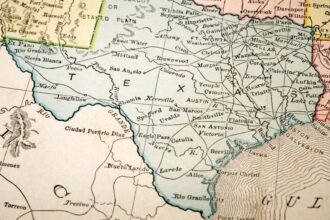Donald Trump, the former president of the United States, has officially asked the U.S. Supreme Court to throw out a lower court’s ruling that said some of his import tariffs were illegal. The case is about Trump’s use of emergency powers to put in place broad trade taxes, which small firms and many states are now fighting.
Trump’s lawyers argued in a petition to the judges that the President has the constitutional power to take these steps to safeguard the country’s economic interests. The appeal comes after a federal appellate court said that Congress, not the executive branch, has the main power to set tariffs.
If the court doesn’t consider the case, the decision might go into force by mid-October. This could mean that important trade policies are reversed and billions of dollars in tariffs are refunded.
Why is the Tariff Authority being looked at?
The legal argument is on how Trump used the International Emergency Economic Powers Act (IEEPA). This statute lets presidents deal with threats to national security that are out of the ordinary and serious. Trump used this to justify high tariffs on more than 90 countries, saying that trade imbalances and threats to US manufacturing were to blame.
The appellate court, on the other hand, concluded 7-4 that imposing tariffs is a key job of the legislature. The ruling said that using the IEEPA in this manner went beyond what the president was allowed to do and broke the Constitution’s checks and balances. Here is the link to our article on Supreme Court aid.
What Could Happen if the Ruling Stays?
If the Supreme Court doesn’t get involved, the ruling will go into force on October 14. who could make important tariffs void and have the U.S. government pay billions of dollars in refunds to the corporations who were affected. Small businesses and trade groups say that the tariffs have hurt American enterprises, especially those that import goods.
In May, a different court also struck down the tariffs, although they were not enforced right away because of appeals. The Supreme Court’s ruling, which is still pending, now has the authority to resolve the dispute for good.
How does the Trump legal team explain the appeal?
In the most recent filing, the U.S. Solicitor General said that the appellate court’s ruling undermines national interests and gets in the way of important trade talks. He said that the decision could make it harder for executives to do their jobs at times of economic trouble.
The government thinks that the tariffs are not only legal, but also necessary to protect the U.S. against unfair trade practices by other countries. Trump’s team says that changing these rules would show that trade enforcement is weak and unstable. Here is the link to our article on Supreme healthcare ruling.
What effect does this have on trade with other countries?
The appeal ruling has an effect on tariffs that are put on major trading partners including China, Canada, and Mexico. Trump put these taxes in place as part of a larger plan to lower the trade imbalance and stop the flow of specific items, like drugs.
The verdict does not change the tariffs on steel and aluminum, though, because they were put in place under a distinct set of laws. This partial preservation of duties shows how complicated U.S. trade law is and how many different ways there are to implement tariffs.
Final Thoughts
The outcome of the Trump tariff appeal will have big effects on U.S. trade policy and the power of the president. The Supreme Court now has the power to decide how far executive power can go in making economic policy while small businesses fight for relief and constitutional clarity. The decision could change how future governments deal with economic crises, as billions of dollars are at stake and trade relations around the world are at stake.








